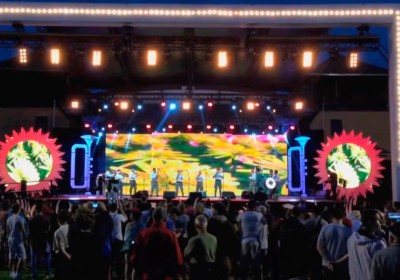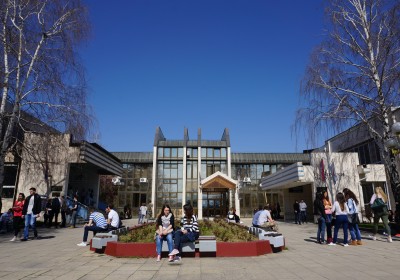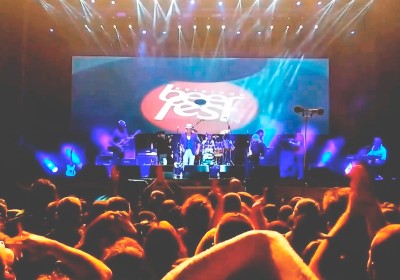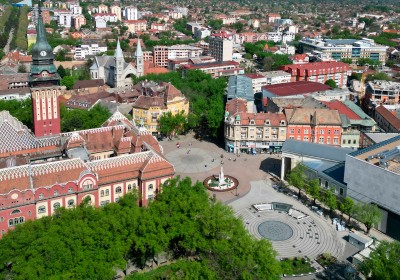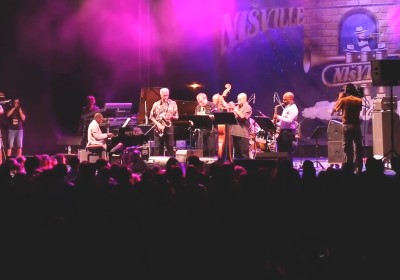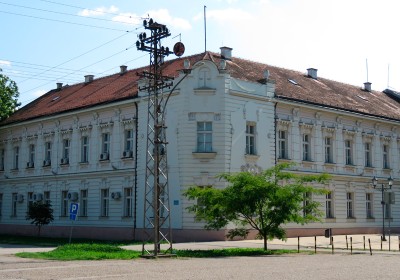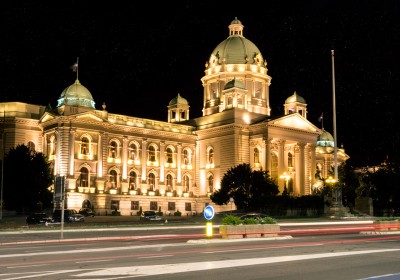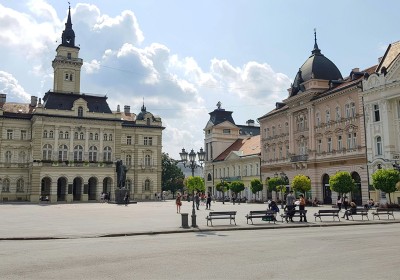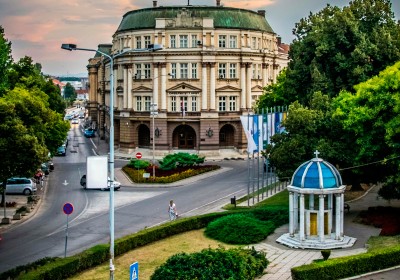Belgrade and surroundings – 3 days
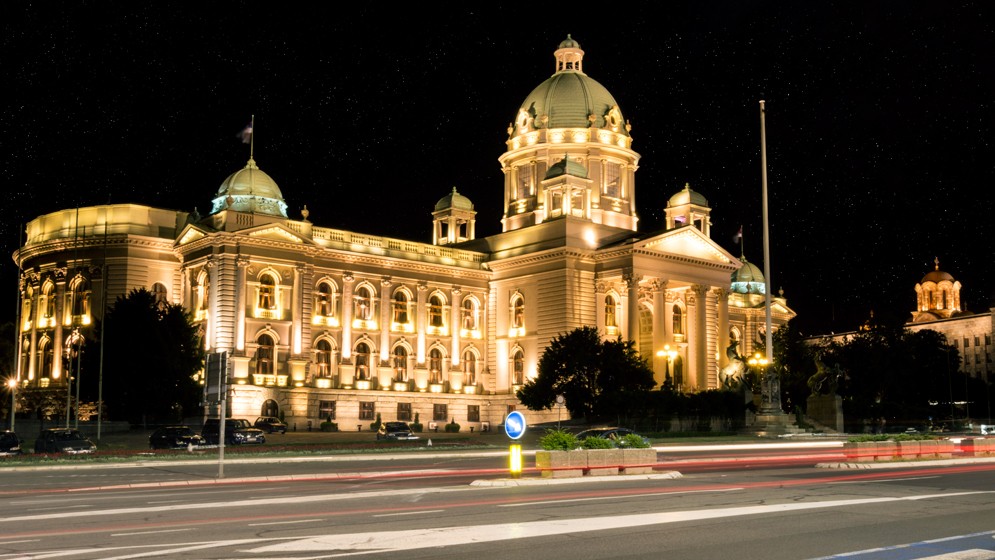
1. National Assembly of Serbia
Planning a trip to Belgrade with just three days to explore? It might seem like a challenge, but don’t worry – this guide will help you navigate the city’s best spots with ease. Belgrade, the dynamic capital of Serbia, is bursting with history, culture, and energy. With so much to see and experience, it’s important to make every moment count. That’s why we’ve curated the top attractions and hidden gems to ensure you get the most out of your short visit.
From the majestic Belgrade Fortress offering panoramic views of the rivers to the quaint cobblestone streets of Skadarlija, this city is a fascinating blend of the old and the new. Whether you’re drawn to the stories of the past, intrigued by the innovations at the Nikola Tesla Museum, or looking to unwind at Ada Ciganlija, this guide will help you discover the very best of Belgrade.
Let’s explore the top 12 attractions that will give you a true taste of Belgrade’s rich history, vibrant culture, and stunning architecture. By the end of this article, you’ll have a clear plan to make every moment of your 3-day trip count.
1. Belgrade Fortress
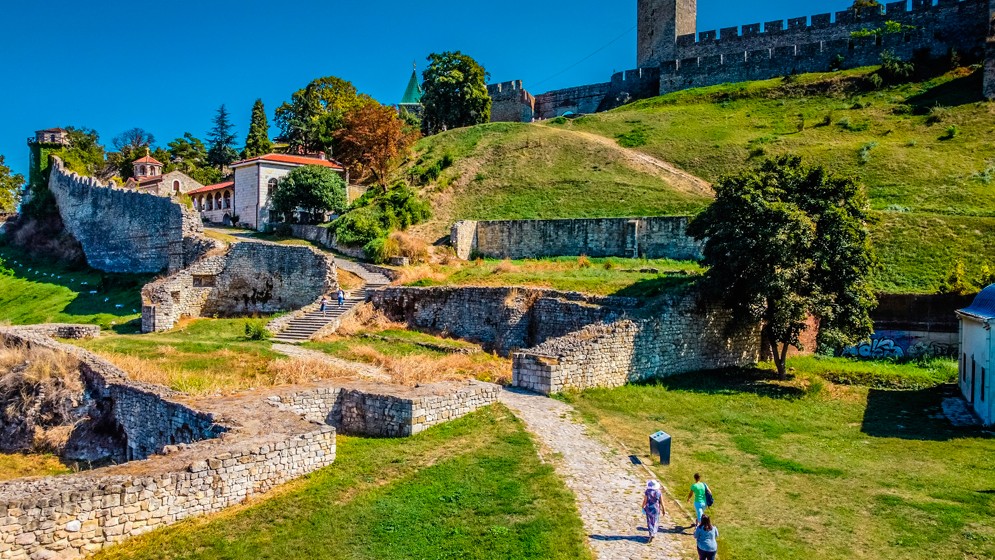
2. Belgrade Fortress
Looking for a slice of history with a side of stunning views? The Belgrade Fortress (Kalemegdan Fortress) is a must-visit spot in Serbia’s capital! This ancient stronghold sits right where the Sava and Danube rivers meet, offering visitors a perfect mix of culture and natural beauty.
As you wander through the fortress, you’ll feel like you’re walking through time. The site has seen it all – from Roman soldiers to Ottoman sultans. Don’t miss the chance to explore Kalemegdan Park, which is part of the fortress complex. It’s a favorite hangout for locals and tourists alike, with winding paths, shady benches, and picturesque fountains. Keep an eye out for the famous “Victor” statue – it’s a real Instagram hotspot!
For the best experience, plan to spend at least a few hours at the fortress. You can check out museums, climb towers for panoramic views, or simply relax in the park. And here’s a pro tip: admission is free! So you can enjoy this historical gem without breaking the bank.
2. St. Sava Temple
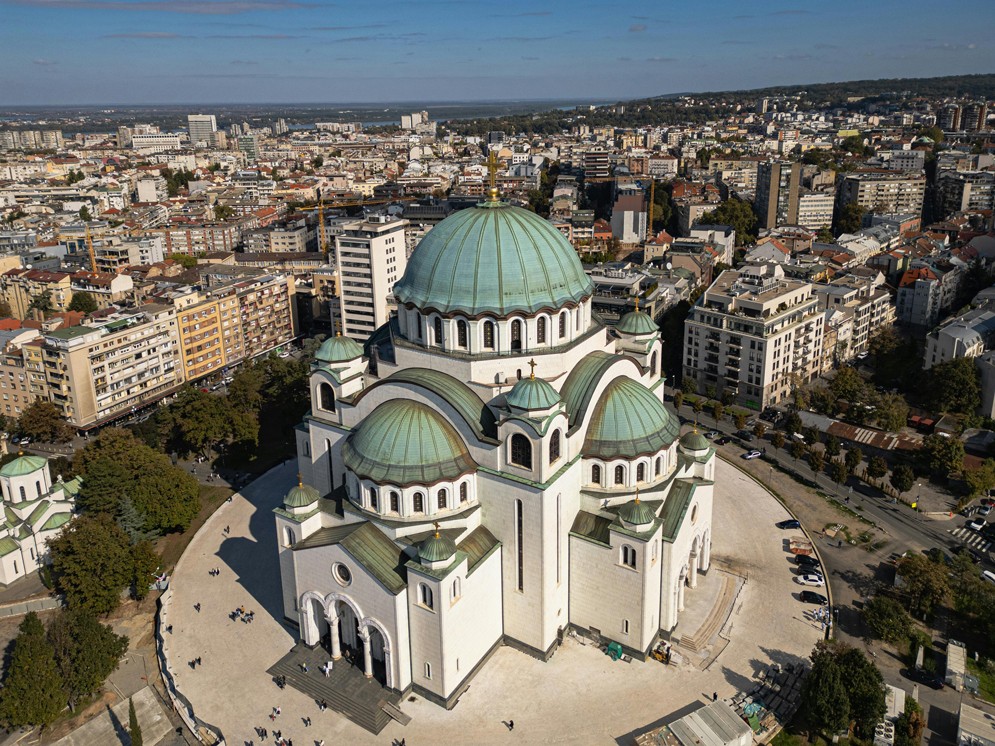
3. The Church of Saint Sava
The Church of Saint Sava is not only a place of worship but also a symbol of the city’s historical and cultural identity. This massive Serbian Orthodox church is a real eye-catcher and a must-see for any visitor to the city. It sits proudly on the Vračar plateau, impossible to miss with its gleaming white walls and huge dome.
What makes this church so special? For starters, it’s one of the largest Orthodox churches in the world. The main dome is about 68.5 meters high, making it a dominant feature of Belgrade’s skyline. The church also has a fascinating history. It is built on the site believed to be where the Ottoman rulers burned the remains of Saint Sava, Serbia’s most revered saint, in 1595. Construction of the church began in 1935 but was delayed for many years due to World War II and later, during the communist era. It wasn’t until 1985 that construction resumed in earnest, and the church was finally completed in 2004.
Inside, you’ll be amazed by the stunning gold mosaics covering an area of 12,000 square meters, making it one of the largest mosaic projects in the world. The church can accommodate around 7,000 people, making it a significant venue for religious and cultural events in Serbia. Whether you’re interested in architecture, history, or just want to see something truly magnificent, the Church of Saint Sava is a Belgrade highlight you won’t want to miss!
3. Nikola Tesla Museum
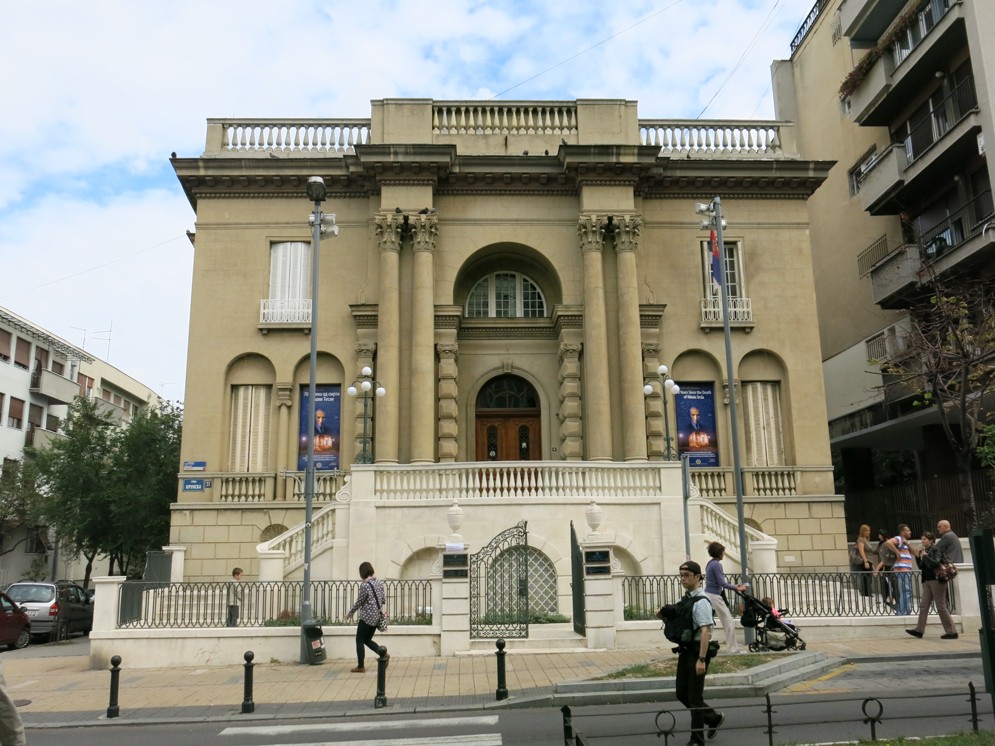
4. Nikola Tesla Museum
The Nikola Tesla Museum in Belgrade, Serbia, is a fascinating science museum dedicated to the life and work of the brilliant inventor Nikola Tesla. Located in a charming residential villa built in 1927, the museum houses an impressive collection of Tesla’s personal items, documents, and inventions. Visitors can explore over 160,000 original documents, 1,200 historical technical exhibits, and 1,500 photographs that showcase Tesla’s groundbreaking contributions to the field of electricity.
One of the museum’s highlights is its interactive exhibition, featuring 3D computer-generated models of Tesla’s inventions. Tourists can witness demonstrations of Tesla’s creations during guided tours, bringing his innovative ideas to life. The museum also serves as Tesla’s final resting place, adding a sense of reverence to the experience. In 2017, the museum attracted 120,000 visitors, testament to its popularity and significance.
For those interested in the history of science and technology, the Nikola Tesla Museum offers a unique opportunity to delve into the world of one of history’s greatest inventors. The museum’s archive is so valuable that it was inscribed on UNESCO’s Memory of the World Programme Register in 2003. Whether you’re a science enthusiast or simply curious about Tesla’s contributions to modern technology, this museum provides an engaging and educational experience in the heart of Belgrade.
4. Skadarlija: Belgrade’s Bohemian Quarter
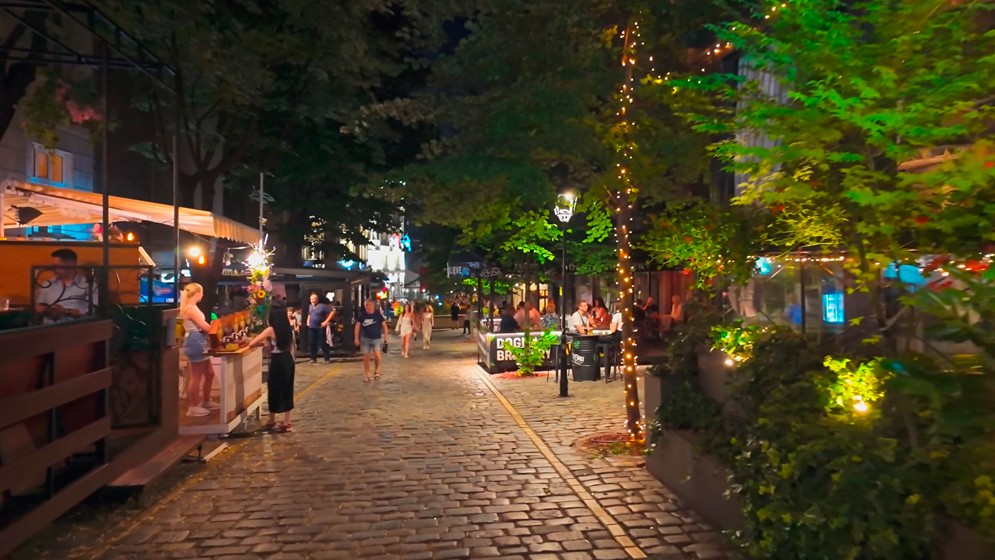
5. Skadarlija
Skadarlija, often referred to as Belgrade’s Montmartre, is a charming bohemian quarter located in the heart of Serbia’s capital. This vintage street, less than 400 meters long, is nestled just 300 meters northwest of Terazije, central Belgrade. As the second-most visited tourist attraction in the city after Kalemegdan, Skadarlija offers visitors a unique glimpse into Belgrade’s artistic and cultural heritage.
The neighborhood’s history as a bohemian haven began in the late 19th century, particularly after 1901 when the famous Dardaneli inn was demolished and its patrons – prominent writers and actors – moved to Skadarlija’s kafanas (traditional Serbian taverns). Today, the street is lined with well-preserved traditional urban architecture, including renowned restaurants like Tri šešira (Three Hats), Dva jelena (Two Deer), and Zlatni bokal (The Golden Chalice). These establishments have hosted numerous celebrities over the years, from Jimi Hendrix to George H. W. Bush.
Visitors to Skadarlija can enjoy a vibrant atmosphere filled with traditional Serbian cuisine, live music, and street performances. The neighborhood comes alive especially during the summer season, which officially opens with the raising of a “bohemian flag” in late April or early May. Throughout the year, various festivals and events take place, including the Summer Saint Nicholas Feast, Skadarlija Fest, and a unique Snail Race for choosing the slowest bicycle rider. At the end of the street, tourists can also visit the Sebilj fountain, a gift from Sarajevo, and explore the nearby Bajloni’s farmers’ market, adding to the authentic local experience of this picturesque Belgrade attraction.
5. Republic Square
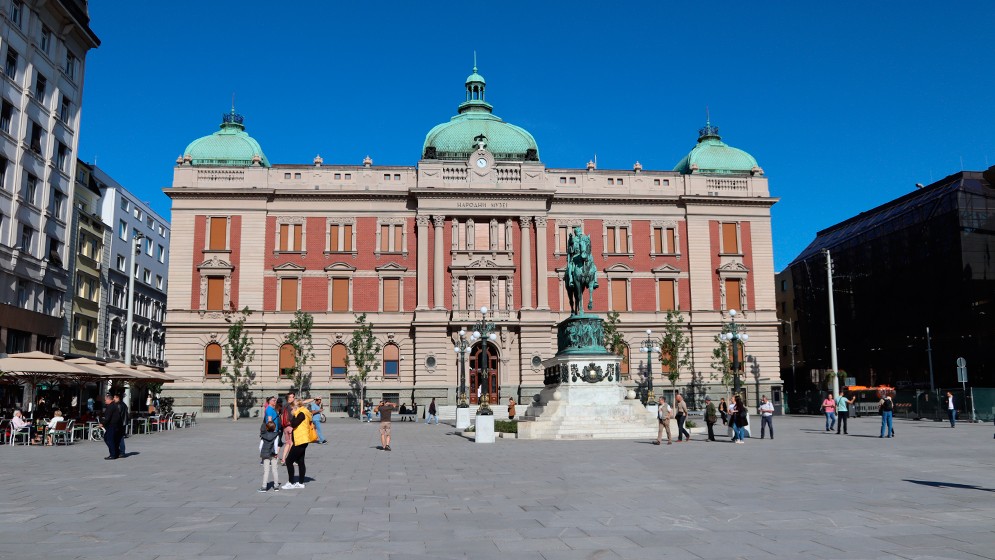
6. Republic Square
Republic Square is one of the central and most important squares in Belgrade, Serbia. Located in the heart of the city, it’s a bustling hub of activity and a popular meeting point for locals and tourists alike. The square is home to several significant landmarks, including the iconic statue of Prince Michael on horseback, erected in 1882 to honor his role in expelling the Turks from Serbia. This monument has become so well-known that locals often use the phrase “let’s meet at the horse” when arranging to meet in the square.
The square is surrounded by important cultural institutions, making it a great starting point for exploring Belgrade’s history and arts scene. The National Museum, housed in a grand building on one side of the square, showcases Serbian and international art and artifacts. The National Theatre, another prominent building facing the square, offers a variety of performances for theatre enthusiasts. The square has undergone several transformations throughout history, from its origins as the site of the Ottoman Stambol Gate to its current form as a modern urban space. Recent renovations have aimed to make the area more pedestrian-friendly, though they have been met with mixed reactions from locals.
For tourists, Republic Square serves as an excellent orientation point and a gateway to other attractions. The popular pedestrian zone of Knez Mihailova Street begins at one end of the square, leading visitors to a variety of shops, cafes, and eventually to the historic Belgrade Fortress. The square’s central location and its mix of historical significance and modern city life make it a must-visit spot for anyone exploring Belgrade.
6. Knez Mihailova Street
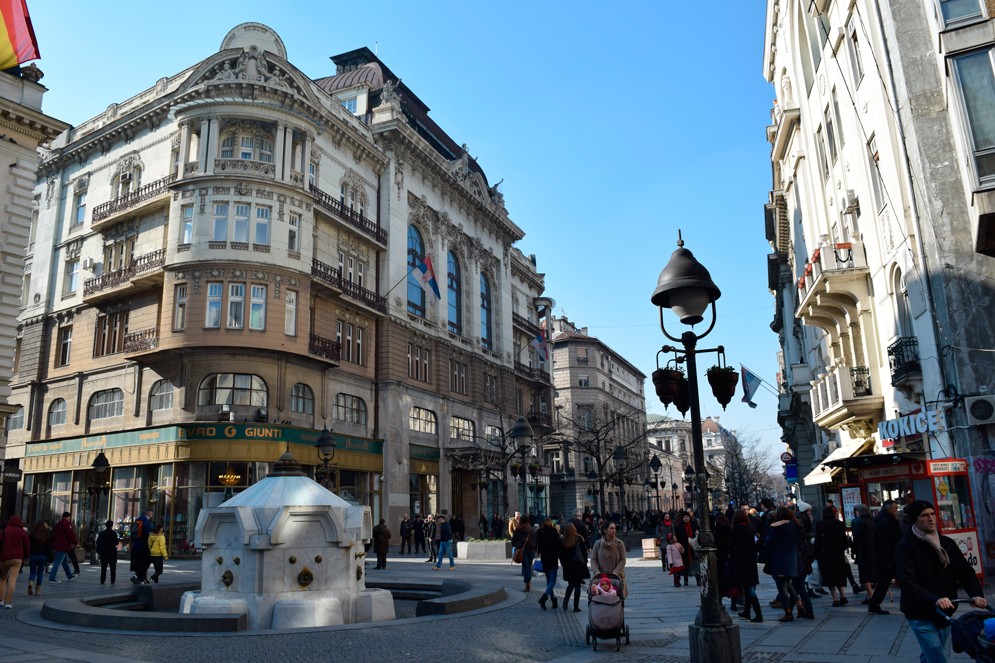
7. Knez Mihailova Street
Knez Mihailova Street, located in the heart of Belgrade, is a vibrant pedestrian zone and one of the city’s most valuable landmarks. Named after Prince Mihailo Obrenović III, this one-kilometer-long street is not just a shopping destination but a journey through Serbian history and culture. As you stroll along its length, you’ll be walking the same path as ancient Romans did, as the street follows the layout of the main road in the Roman city of Singidunum.
The street is lined with beautiful 19th-century architecture, housing some of Belgrade’s most important institutions. You’ll find the Serbian Academy of Sciences and Arts, the Goethe-Institut, and several other cultural centers here. Don’t miss the opportunity to explore the side streets and passages, such as the Nikola Spasić Passage, built in 1912 in Secession style. As you walk, you’ll be surrounded by a mix of local and international shops, cafes, and restaurants, making it a perfect spot for shopping, dining, or simply people-watching.
For history enthusiasts, Knez Mihailova offers glimpses into different periods of Belgrade’s past. From Roman remains beneath your feet to Ottoman-era fountains and 19th-century mansions, the street is a living museum of the city’s rich heritage. At the end of your walk, you’ll reach Kalemegdan Park and the Belgrade Fortress, offering stunning views over the confluence of the Sava and Danube rivers. Whether you’re interested in history, culture, shopping, or just soaking in the local atmosphere, Knez Mihailova Street is an essential stop on any visit to Belgrade.
7. National Museum of Serbia
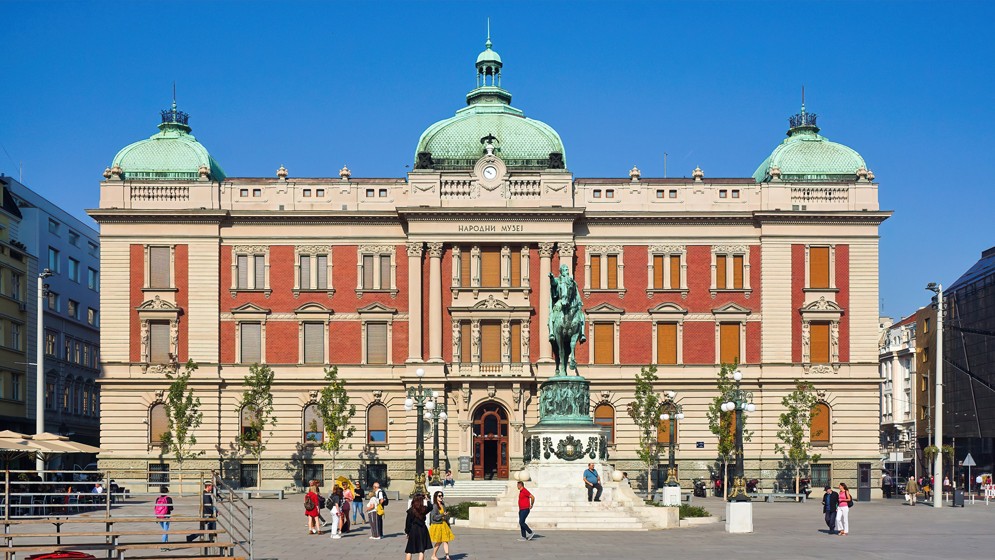
8. National Museum of Serbia
The National Museum of Serbia, located in the heart of Belgrade on Republic Square, is a must-visit destination for art and history enthusiasts. As the largest and oldest museum in Serbia, it houses an impressive collection of over 400,000 objects spanning from prehistoric times to the 20th century. This collection includes significant archaeological finds, medieval artifacts, and a variety of art pieces from different periods and regions, including notable works from ancient Greece, Rome, and Egypt. The museum’s building itself is a monument of cultural importance, originally constructed in 1903 and adapted to its current purpose in the 1950s.
Visitors can explore a vast array of exhibits, including archaeological treasures like the Lepenski Vir sculptures and ancient Roman artifacts, as well as an extensive numismatic collection featuring over 300,000 items. The museum’s art collection is particularly noteworthy, showcasing works by renowned international artists such as Rubens, Renoir, Monet, and Picasso, alongside significant Serbian and Yugoslav artworks. Of special interest is the medieval collection, which includes the famous Miroslav Gospels, a 12th-century manuscript recognized by UNESCO. The museum also houses rare artifacts such as the Egyptian gold sarcophagus and mummy of the priest Nesmin, providing a glimpse into ancient civilizations.
After undergoing an extensive renovation, the National Museum of Serbia reopened its doors to the public in June 2018. The museum now offers a comprehensive journey through the cultural development of the region, with dedicated floors for different periods and styles of art. With its central location and rich cultural offerings, the National Museum of Serbia provides an excellent opportunity for tourists to immerse themselves in the artistic and historical heritage of Serbia and the wider European context.
8. Avala Mountain
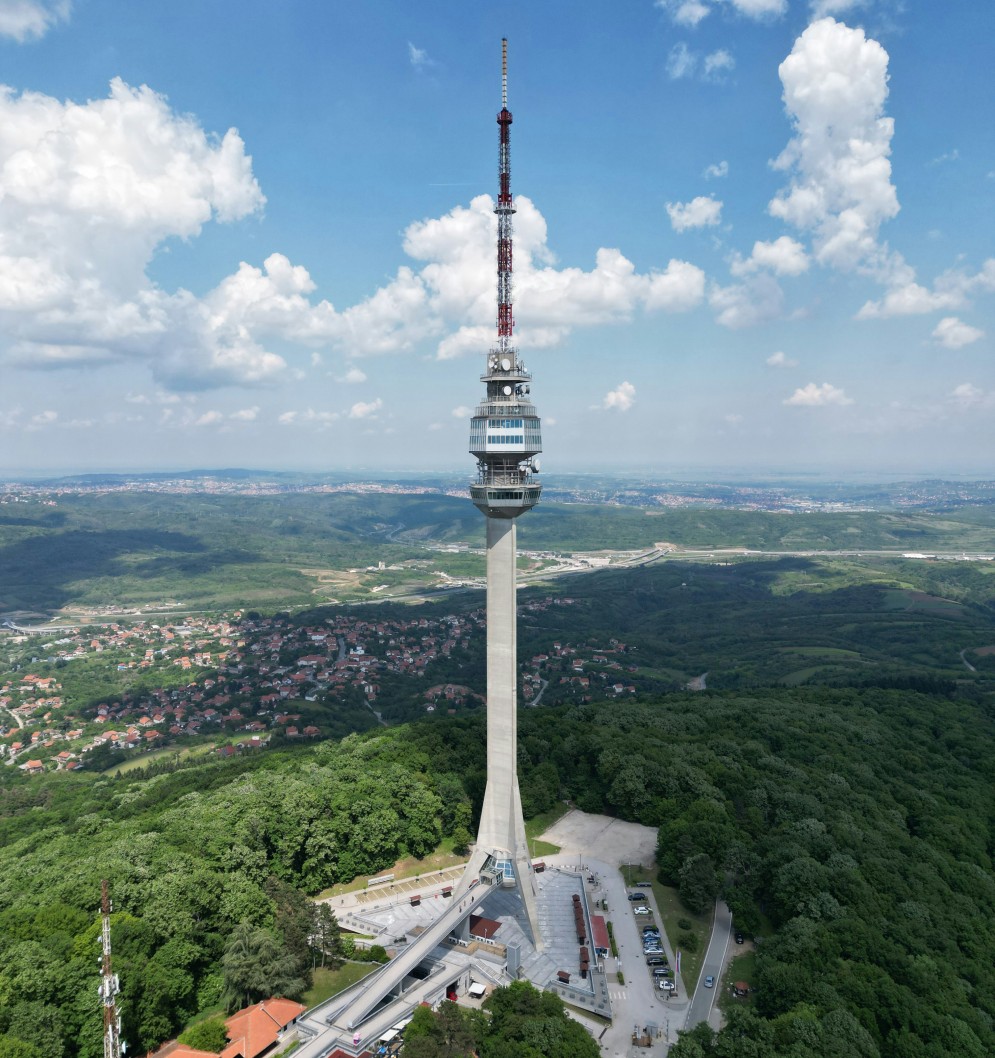
9. Avala Mountain
Avala Mountain, located 16 km southeast of Belgrade, is a popular destination for tourists seeking natural beauty and historical landmarks. Standing at 511 meters above sea level, Avala is classified as a mountain, although just barely exceeding the threshold. The mountain provides stunning panoramic views of Belgrade, Vojvodina, and Šumadija, making it an excellent spot for sightseeing. Avala’s geological composition includes serpentinite, limestone, and magmatic rocks, which contribute to its unique landscape. Historically, Avala was an island in the Pannonian Sea, which explains its “island mountain” classification.
For history enthusiasts, Avala offers several significant monuments and historical sites. One of the most notable is the Monument to the Unknown Hero, dedicated to an unidentified Serbian soldier from World War I. This mausoleum-like structure was designed by renowned sculptor Ivan Meštrović and is a key attraction on the mountain. Avala is also known for its Avala TV Tower, which became operational in 1965. At that moment it was 202.87 meters high and was considered one of the most beautiful towers in Europe and the world. After being destroyed in 1999, the Avala TV Tower was rebuilt and opened on April 21, 2010. Currently, the new Avala Tower is almost 205 meters high (204.68 m), 2 meters higher than the demolished one. The tower is a popular tourist attraction, offering an observation deck with breathtaking views.
The area around the tower includes a restaurant, an ethno-gallery, and various recreational facilities, making it a perfect spot for a day trip. Additionally, Avala is rich in flora and fauna, with over 600 plant species and numerous bird species, making it an ideal destination for nature lovers and hikers. Avala Mountain combines natural beauty, rich history, and modern attractions, providing a comprehensive experience for tourists visiting the Belgrade area.
9. Ada Ciganlija
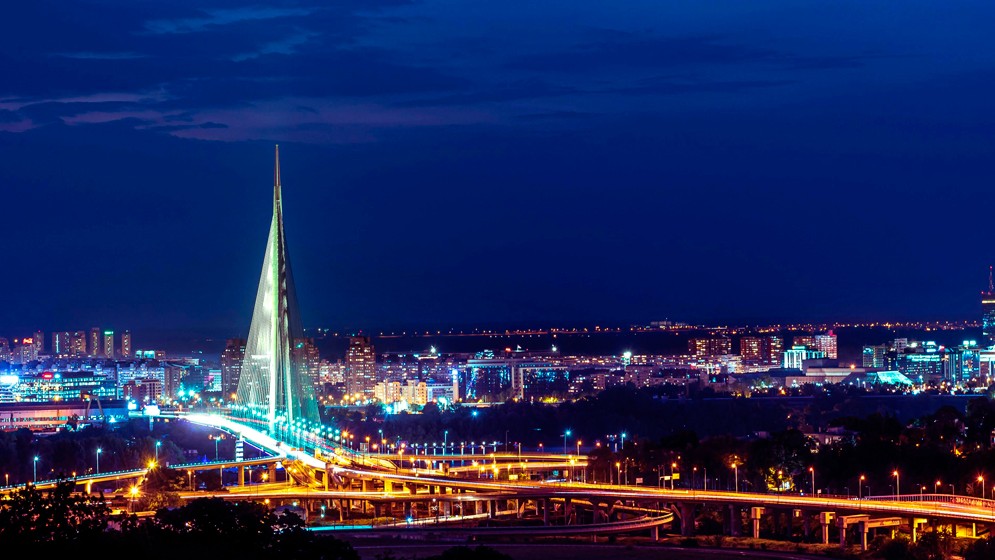
10. Ada Bridge
Ada Ciganlija, affectionately known as “Belgrade’s Sea,” is a river island turned peninsula in the heart of Serbia’s capital. This urban oasis offers a unique blend of natural beauty and recreational facilities, making it a must-visit destination for tourists. The island boasts a 7-kilometer-long beach along Lake Sava, which was artificially created in 1967. During summer, the lake’s water temperature can reach a pleasant 24°C (75°F), perfect for swimming and water sports. The beach area can attract over 100,000 visitors daily and up to 300,000 on weekends, testament to its popularity among locals and tourists alike.
Beyond its famous beach, Ada Ciganlija is a haven for outdoor enthusiasts and sports lovers. The peninsula features numerous facilities including tennis courts, football fields, basketball courts, a golf course, and even an artificial alpine skiing slope. Visitors can enjoy activities such as bungee jumping, water skiing, kayaking, and cycling on the 8-kilometer path that encircles the lake. Nature lovers will appreciate the island’s rich ecosystem, with its lush forests home to various plant and animal species, including foxes, rabbits, and numerous bird species. The island also hosts several restaurants, cafes, and nightlife venues, ensuring visitors have plenty of options for refreshment and entertainment.
For those interested in unique attractions, Ada Ciganlija features a 140-meter high fountain in Lake Sava, modeled after the famous Jet d’Eau in Geneva. In the evenings, visitors can enjoy a special laser light show near the fountain. The island also has an artistic sculpture workshop, a children’s theatre, and a Robinson Crusoe-themed entertainment feature. With its diverse offerings and beautiful natural setting, Ada Ciganlija provides a perfect escape from the urban bustle, offering something for everyone – from relaxation on the beach to adrenaline-pumping sports activities, all within easy reach of Belgrade’s city center.
10. Zemun Old Town
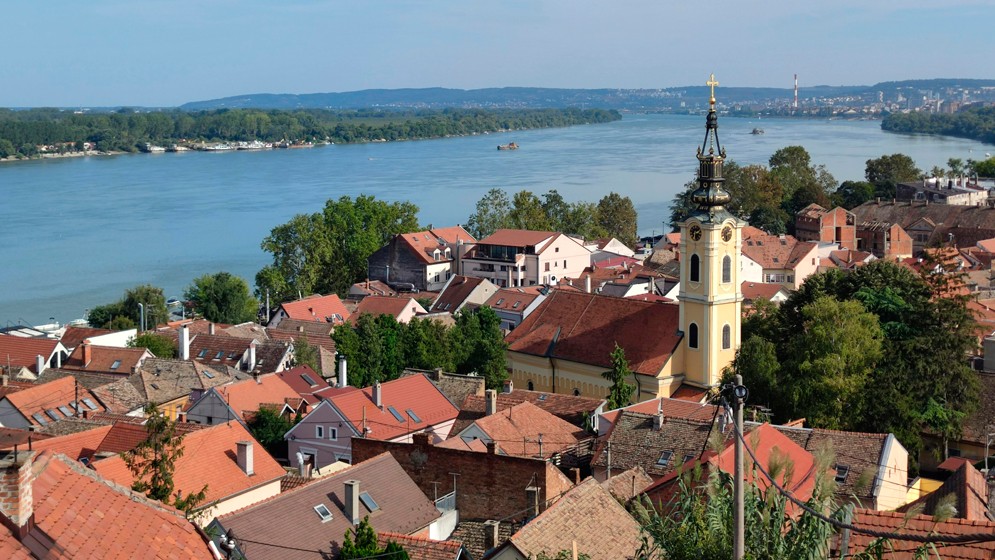
11. Zemun Old Town
Zemun Old Town, located on the right bank of the Danube river, is a charming historical district that offers visitors a glimpse into the rich past of Belgrade. The area is dominated by the Gardoš Tower, also known as the Millennium Tower or the Tower of Janos Hunyadi. Built in 1896 to celebrate a thousand years of Hungarian settlement in the Pannonian plain, this iconic structure now serves as a symbol of Zemun and offers panoramic views of the Danube and Belgrade. The tower is part of the Zemun Fortress, which still has visible ruins from the medieval period, including angular towers and parts of the defending wall that date back to the 1521 Ottoman siege.
The neighborhood of Gardoš, where the Old Town is situated, has largely preserved its historical character. Visitors can wander through narrow, cobblestone streets that are often unsuitable for modern vehicles, creating a quaint atmosphere reminiscent of earlier times. The area is dotted with individual residential houses that contribute to its old-world charm. For those interested in local history, the Zemun Homeland Museum provides insights into the area’s past. Additionally, the Zemun quay (Zemunski Kej) along the Danube has been transformed into a long promenade, offering various entertainment facilities, including barge-cafés and an amusement park, making it an ideal spot for relaxation after exploring the historical sites.
11. Museum of Yugoslavia
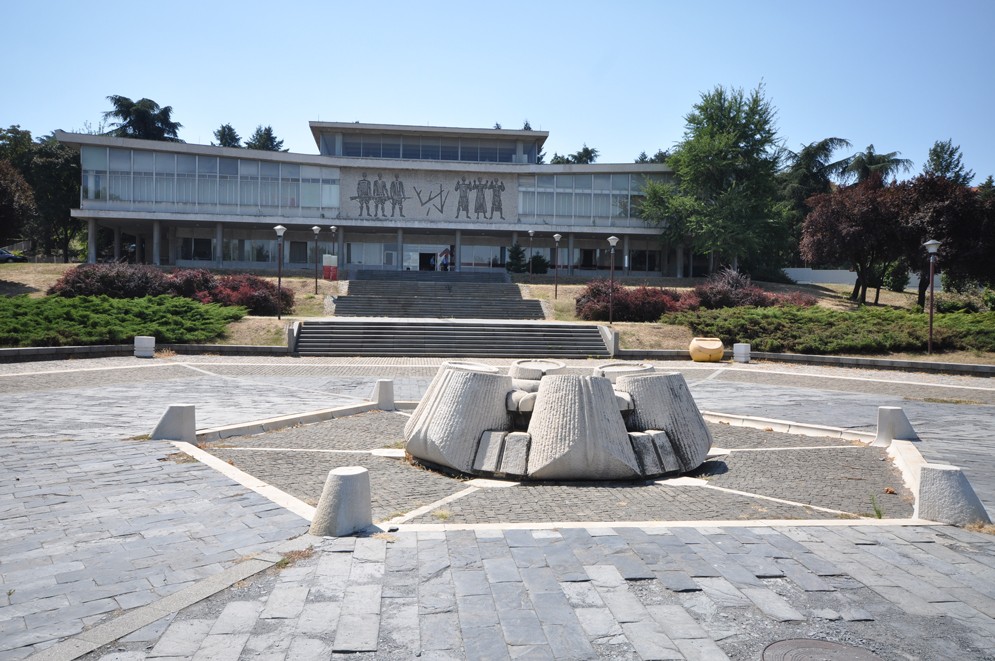
12. Museum of Yugoslavia
The Museum of Yugoslavia in Belgrade is a key destination for those interested in the history and culture of the former Yugoslavia. The museum complex comprises three main buildings: the 25 May Museum, the House of Flowers, and the Old Museum. Established in 1962, the Museum of Yugoslavia provides a comprehensive overview of the period from the Kingdom of Yugoslavia to Socialist Yugoslavia, with a special focus on the life and work of Josip Broz Tito, the former president of Yugoslavia. With over 120,000 visitors annually, it is the most visited museum in Serbia.
The House of Flowers, part of the Museum of Yugoslavia, is particularly notable as the resting place of Josip Broz Tito and his wife, Jovanka Broz. Designed by architect Stjepan Kralj, this mausoleum was completed in 1975 and originally served as Tito’s winter garden and auxiliary office. The name “House of Flowers” comes from the numerous flowers that once surrounded the tomb, though today it features white rocks in their place. The interior includes Tito’s tomb and various exhibitions, including the “Relay of Youth” batons and other memorabilia related to Youth Day, a significant holiday in the former Yugoslavia.
Visitors to the Museum of Yugoslavia can explore a wide range of exhibits that illustrate the history of Yugoslavia throughout the 20th century. The museum houses Tito’s personal belongings, gifts from foreign dignitaries, and artwork by renowned international artists such as Francisco Goya. The museum complex is set in a lush park in the Dedinje district, providing a tranquil environment for reflection and learning about this pivotal period in Balkan history. The House of Flowers, in particular, remains a place of remembrance, drawing visitors from across the region and beyond, especially on May 25th, which was celebrated as Youth Day and Tito’s official birthday.
12. Belgrade Waterfront
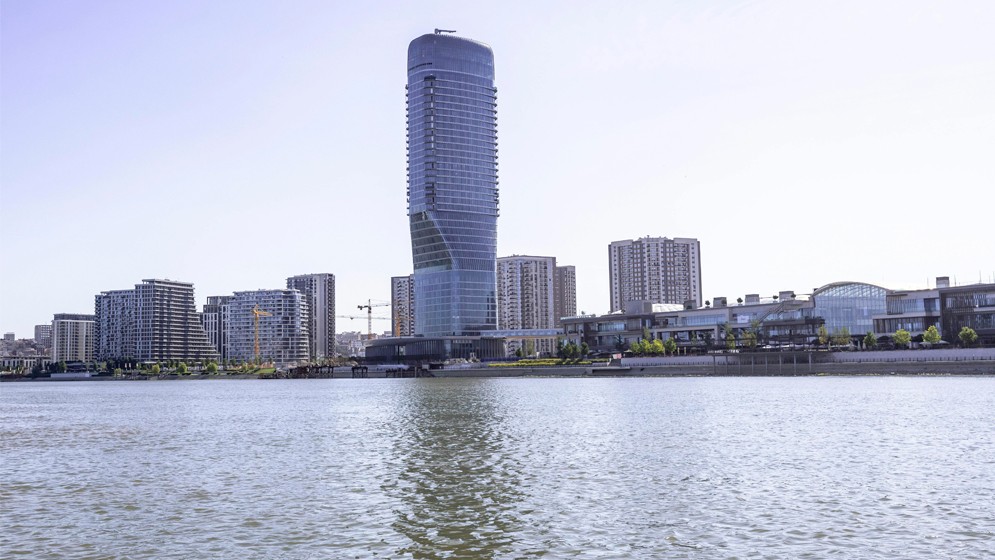
13. Belgrade Waterfront
Belgrade Waterfront, known locally as “Beograd na vodi,” is an impressive urban renewal project that has transformed the Sava riverbank in Serbia’s capital. This ambitious development, initiated in 2014, spans 177 hectares and is set to become a new city hub with a mix of residential, commercial, and cultural spaces. Tourists visiting Belgrade will find this area a must-see attraction, showcasing modern architecture alongside the city’s rich history.
One of the standout features of Belgrade Waterfront is the Kula Belgrade, a 168-meter tall skyscraper designed to be the new symbol of the city. This impressive tower will house luxury apartments, a 5-star St. Regis hotel, and an observation deck offering panoramic views of Belgrade. Another highlight for visitors is Galerija Belgrade, the largest shopping mall in Southeast Europe, which opened in 2020. It offers a wide range of shopping and dining options, as well as entertainment facilities like a trampoline park and a multiplex cinema. The development also includes the Belgrade Park and Sava Promenada, providing beautiful green spaces and riverside walks for tourists to enjoy.
For those interested in events and culture, Belgrade Waterfront hosts various festivals and celebrations throughout the year. The area has become a popular spot for New Year’s Eve celebrations, featuring concerts, fireworks, and laser shows. In the summer, visitors can experience the Belgrade River Fest, which has hosted international music stars. With its blend of modern amenities, cultural attractions, and scenic riverside location, Belgrade Waterfront offers tourists a glimpse into the future of Belgrade while providing a comfortable and exciting base for exploring the city.
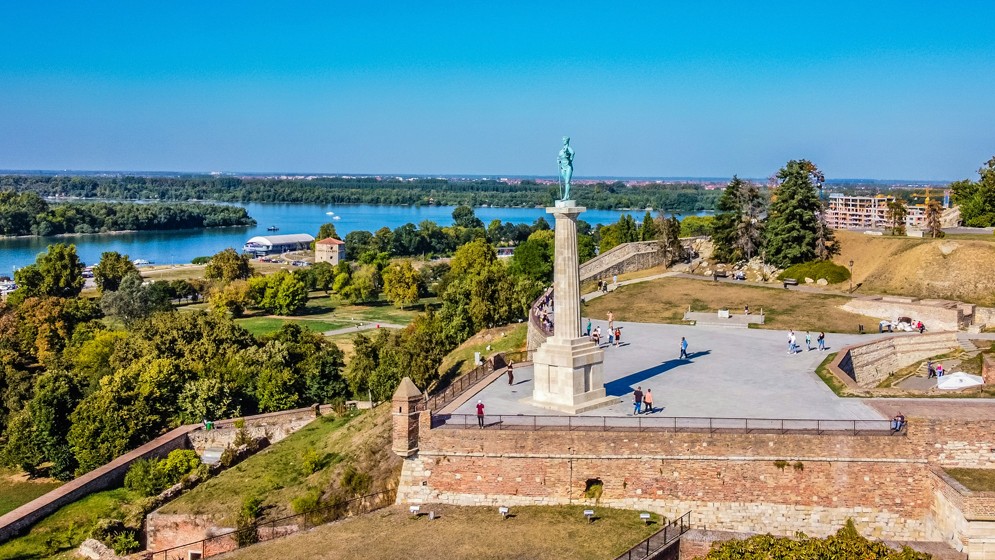
14. Pobednik Monument
Remember, this guide is just a starting point. Belgrade is a city that rewards exploration, so don’t be afraid to wander off the beaten path. You might stumble upon a hidden café in Skadarlija, or discover a local festival you hadn’t planned for.
Didn’t get to see everything? Don’t worry – that’s just a perfect excuse to plan your next visit! Belgrade’s charm lies not just in its attractions, but in its welcoming people, delicious cuisine, and vibrant atmosphere. As you leave, you’ll likely find yourself already dreaming of your return to this captivating city on the Danube.
Safe travels, and until next time – Живели! (Cheers!)
- Photo by Djordje Jovanovic on Pixabay
- Photo by Dimitrije Milenkovic on Unsplash
- Photo by Micko Damnjanovski on Pexels
- Dungodung, CC BY-SA 3.0, via Wikimedia Commons
- Stills adapted from the video "Serbia | Belgrade | Skadarlija | Walking Tour | 4K | 3D Sound #travel #3dsound" published on the YouTube channel "VOYAGER". Original video licensed under CC BY 3.0. Modifications include cropping and color adjustment.
- Rico van Manen, CC BY 2.0, via Wikimedia Commons
- Photo by Rade Dr. on Pixabay
- Simon Legner (User:simon04), CC BY-SA 4.0, via Wikimedia Commons
- Photo by Anton Lukin on Unsplash
- Photo by Bojan Petkovic on Pexels
- Photo by Boris Hamer on Pexels
- Jorge Láscar from Melbourne, Australia, CC BY 2.0, via Wikimedia Commons
- Photo by Boris Hamer on Pexels
- Photo by Dimitrije Milenkovic on Unsplash
